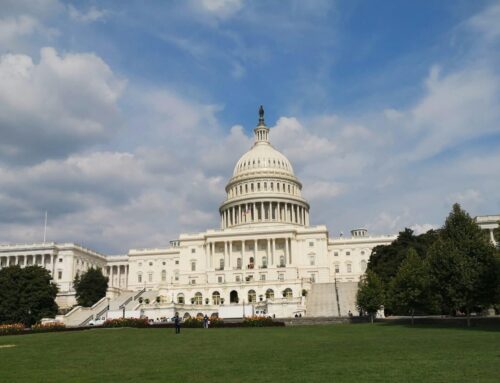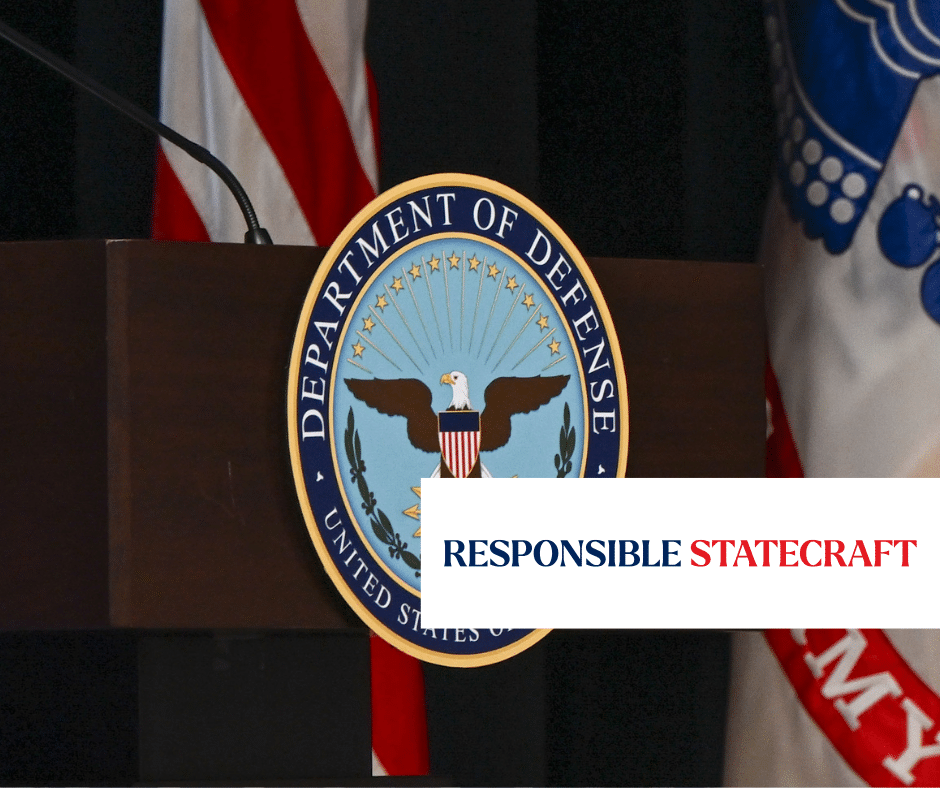View/Download this article in PDF format.
The Department of Energy (DOE) loan guarantee program carries extremely high taxpayer risk, potentially jeopardizing billions of taxpayer dollars if energy project loans default. Passed as part of the Energy Policy Act of 2005, this program currently has $34 billion in loan guarantee authority available for nuclear, renewable, energy efficiency, and clean coal projects.
Over the life of the program, the DOE loan programs office has received a total of 460 applications as a result of nine solicitations with an median requested loan amount of $141 million—and a high of $12 billion to support the development of a nuclear power plant.
Taxpayers have a considerable stake in the successes or defaults of DOE’s loan guarantee program. Under the current structure of the program there are several significant taxpayer concerns, including the massive scope of the program, uncertain costs associated with Title XVII, the weakening of taxpayer rights in the event of default, and the unclear administration of loans, among others. We have highlighted only some of the most serious risks to taxpayers that the loan guarantee program presents.
- Underestimated Program Costs. To date, there are two costs associated with the loan guarantee program: the administrative cost and the subsidy cost. The loan guarantee program has unclear administrative expenses. Although the loan guarantee program is designed to be self-financing, the Government Accountability Office (GAO) has concluded that subsequent appropriations will likely be needed to cover the expenses of the program. A 2008 Government Accountability Office (GAO) report noted that DOE had not yet identified the program’s administrative costs or developed a process to estimate them. The subsidy cost (the net present value of the anticipated costs of defaults) of the loans must be financed through the collection of a borrower’s fee or appropriated by Congress according to the Energy Policy Act of 2005. While a program paid for by loan guarantee recipients would appear to protect taxpayers, there are many risks involved with this approach. For example, the method used to calculate market risk often substantially underestimates credit subsidy costs to make the loan guarantee more attractive to industry. The CBO currently estimates that the subsidy cost of the loan guarantees will be underestimated by one percent, but given the difficulties in accurately assessing the subsidy cost, it is likely to be significantly higher. Furthermore, incorrect estimations will come directly from the U.S. Treasury without further appropriations.
- Massive Scope of the Program. The current DOE loan guarantee program applies to a broad portfolio of technologies ranging from small-scale emerging renewable energy projects to large-scale clean coal and nuclear facilities. Because of the large scope of the program, estimating accurate subsidy costs for projects will be difficult and the DOE is likely to underestimate these costs.
- Unreasonable Default Risks. High risk projects that have been unable to secure private financing will likely receive Title XVII loan guarantees. Many, like those for nuclear reactors or large-scale coal facilities, will also be extremely capital intensive. Loan guarantees for projects of this scale could carry a price tag easily reaching $6-$9 billion. CBO estimates that nuclear loan guarantees issued under the Title XVII will carry a 50% default rate, and OMB’s budget assumptions have predicted a 50 percent recovery rate which would therefore lead to a 25% loss to federal taxpayers.
- Risk of Multiple Defaults. The program as currently structured could quickly lead to multiple defaults for the same technology, as demonstrated by the 1980’s Synthetic Fuels Program. Support for multiple projects was distributed rapidly, and market changes and administrative failures led to taxpayers quickly losing billions on defaulted projects.
- High Guarantee Percentage. Under the DOE regulations, guarantees can provide coverage for 100% of the loan for up to 80% of the project’s cost. These generous terms could easily lead to high risk projects that default and leave project owners with significantly less to lose than taxpayers. The Office of Management and Budget’s (OMB’s) guidance for Federal Credit Programs suggests loan guarantees not guarantee more than 80% of the loan, and the DOE Inspector General found that providing guarantees for up to 80% of the project cost will “result in significant risk to the Government and, therefore the American taxpayer.” To protect taxpayers the program should not move forward with such generous terms.
- Threatened Taxpayer Superiority of Rights. The Energy Policy Act of 2005 states that taxpayers’ rights “shall be superior to the rights of any other person with respect to the property.’’ However, in the 2007 rule, the DOE decided that loan guarantees should be issued without the full extent of this taxpayer protection, allowing for the division of recovered money between the holders of the non-guaranteed portion of the security rather than taxpayers. In the December 2009 amended rule, this provision was dramatically expanded, leaving taxpayers extremely vulnerable by stripping their right of first lien and allowing other lesser creditors to recoup repayment of their debt before or on equal footing with the federal government, even when DOE is the majority debt holder of the project. This provision could lead to substantially increased taxpayer losses.
- Lack of Transparency. The public has received little information on the applicants and evaluation criteria for the loan guarantee program. The subsidy cost methodology or the status of pending loan guarantee applicants. There has been no assurance that the subsidy cost will be calculated in a fair and transparent method that protects taxpayer interests above creating acceptable terms to industry. Additionally, it is unclear how and when the subsidy cost will be collected in the conditional agreements that are currently moving forward. In order for taxpayer funds to be protected, the subsidy cost calculation should be transparent and the final subsidy cost should be made public.
- Mismanagement. Poor record keeping creates serious concern for taxpayers that the financial terms of the loans are not being judiciously decided. A March 2011 audit of the Loan Guarantee Program by the Office of the Inspector General found that the program, “could not always readily demonstrate…how it resolved or mitigated relevant risks prior to granting loan guarantees.” Of the 18 projects that had been offered conditional agreements or loan guarantees at the time of the audit, 15 had either limited or no data of their loan origination files—or documents that are supposed to “contain key documentation to support actions taken as part of the loan guarantee process.” The remaining three projects were “more robust” but still left out important information.
In March 2012, the Government Accountability Office (GAO) released a new report in a series of on-going analyses criticizing the Loan Guarantee Program. The report finds that the program continues to experience fundamental flaws stemming from the lack of a consolidated system for monitoring loan applications. Such a system is critical to managing the hundreds of applications received by the program and protect against “increasing the taxpayer’s exposure to financial risk from an applicant’s default,” says the report.
Within the review process, DOE is required to examine the “financial, technical, legal, and other qualifications” of a loan applicant. However, in 11 of the 13 loan applications analyzed by the GAO, the established DOE review process was not followed. To add insult to injury, the review process—based on a procedure manual from March 2009—is supposed to be, at a minimum, updated every year but the loan office has ignored this mandate. This flaw has potentially led “the [loan guarantee] program to issue guarantees to projects that pose an unacceptable risk of default.”
To ensure that taxpayer funds are protected, the Loan Guarantee Program has to be able to demonstrate that the loan decisions it does make reflect market conditions and sound financial reasoning.
- Acceptance of Non-Cash Equity. DOE has also stated that they will consider accepting non-cash equity for payments. Since regulations define “equity” as “cash contributed by the borrowers,” the GAO noted that applicants may be unclear on what constitutes “equity.” Moreover, non-cash payments require the federal government to resell assets received as payment on the open market. Since valuation of non-cash assets depends on market forces, non-cash reimbursements may not fully compensate the DOE’s expenditures, further increasing the financial burden on taxpayers. In order to provide taxpayers with more protection from loan losses non-cash equity should not be accepted and loan guarantee applicants must be required to have real “skin in the game.”
- Technology Favoritism. The GAO found that some projects and technologies, especially nuclear, were treated more favorably than others for no discernable reason. For example, nuclear projects were allowed to remain “in queue” if they were not chosen to undergo due diligence, while other technologies were forced to reapply, and therefore spend likely hundreds of thousands of dollars, under the same circumstances. Nuclear generation projects were given information on how their application was ranking against other applicants before they submitted 75% of the application fees and the second part of the application. This allowed nuclear generation projects to withdraw instead of losing their money, while other technologies were not provided with this same opportunity. In another instance, not only did the DOE allow a front-end nuclear facility applicant extra time to meet technical and financial requirements required while other technologies were rejected when they failed to meet similar criteria, but the DOE “has not provided analysis or documentation explaining why additional time was appropriate for one project but not others.” With the loan guarantee program already creating significant taxpayer risks, the DOE does not need to create anymore by failing to follow their own rules and giving nuclear projects special treatment.
The loan guarantee program is fiscally reckless, poorly managed, prone to serious failure, and is gambling with taxpayer dollars. With record breaking deficits and a spiraling debt, taxpayers can’t afford a program that has so many fundamental flaws.
For more information, please contact Autumn Hanna at (202) 546-8500 x112 or autumn[at]taxpayer.net.










